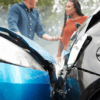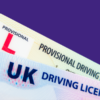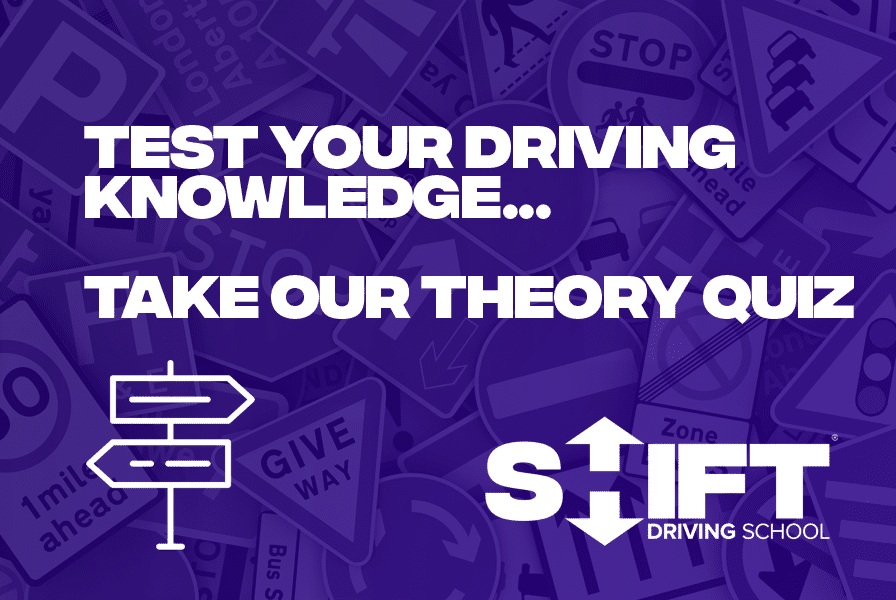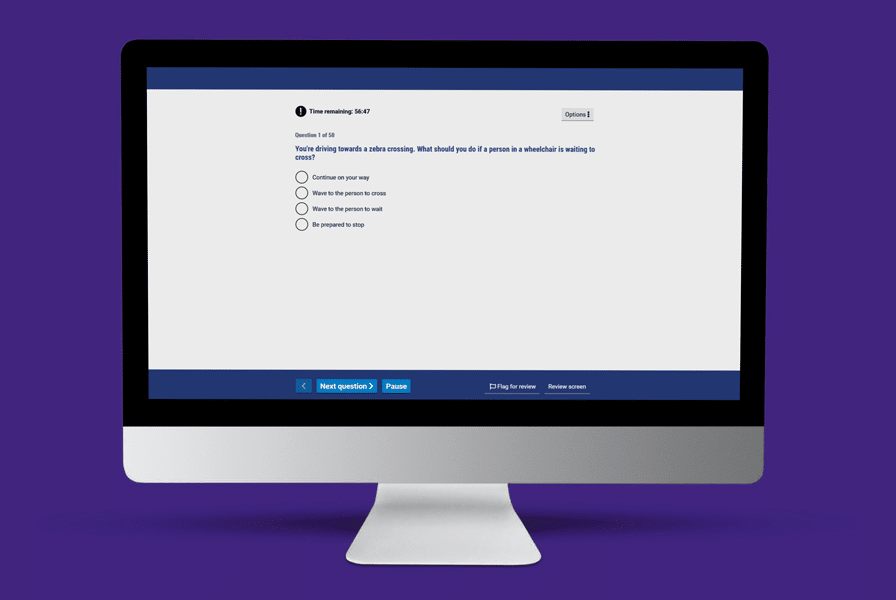
Passing the theory test is the first big hurdle on the road to becoming a licensed driver. While it may not be as nerve-wracking as the practical test, it still requires some serious prep. But don’t worry—we’ve got you covered. With the right approach and a lot of focus, you’ll ace it. This guide will help you get there.
Start with a Solid Study Plan
First things first: no one passes the theory test by winging it. You need a study plan. Think of it like a map for your driving journey—without it, you’ll just go around in circles. Make sure your plan covers all the key areas and includes plenty of practice tests. Remember, cramming the night before won’t work—unless you’re a genius, in which case, why are you reading this?
Use the Right Resources
We live in the age of apps, so put that smartphone to good use. The DVSA’s official app is a lifesaver, offering interactive sections, practice questions, and hazard perception clips. If you’re old school, there’s always the option of books and DVDs—yes, they still exist! The important thing is to use resources that cover all the topics that might come up on the test.

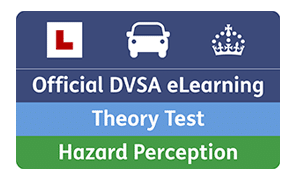
Important Areas to Focus On:
Alertness
Staying focused is key, especially when you’re staring at a computer screen trying to remember the difference between a national speed limit sign and a no entry sign. Think of it like trying to stay awake during a boring movie—only this time, your ability to drive depends on it.
Vehicle Loading
No, this isn’t about how fast you can pack your car for a road trip. This is about load distribution and making sure your vehicle isn’t overloaded. Picture yourself driving a car that’s balanced like a seesaw—sounds fun, right? Exactly. Learn how to do it right.
Attitude
This one’s all about playing nice on the road. It’s not just about knowing the rules, but also about being courteous to other drivers. If you’re the kind of person who insists on being right all the time, remember: the road isn’t the place for it. Save that for your next argument with a mate.
Safety & Your Vehicle
You wouldn’t drive a car with flat tires, right? (Please say no.) This section is all about maintaining your vehicle and knowing your safety equipment. It’s like giving your car a check-up—no one enjoys it, but it’s better than ending up stranded on the side of the road.
Safety Margins
Ever had someone tailgate you? Not fun. Safety margins are about keeping a good distance from other road users. Think of it as personal space, but for your car. Give other drivers some room—they’ll appreciate it, and so will you when you avoid a fender bender.
Road and Traffic Signs
If you think road signs are just suggestions, this section will be a wake-up call. From junctions to pedestrian crossings, understanding these signs is crucial. And no, guessing what they mean as you drive by at 30 mph isn’t a strategy. Trust us.
Rules of the Road
Knowing the rules is like knowing the cheat codes for a video game—it makes everything easier. From stopping distances to junction control, this is where you learn how not to annoy every other driver on the road. And more importantly, how to stay safe.
Hazard Awareness
Picture this: a cyclist suddenly appears from behind a parked car. What do you do? Hazard awareness is all about spotting these potential dangers and reacting in time. It’s like a real-life version of those “spot the difference” games, but with much higher stakes.
Motorway Rules
Motorways are the fast lanes of life, and knowing the rules here is vital. From understanding signs to safe driving practices, this section ensures you don’t end up in the wrong lane—or worse, the wrong way. Speeding may be tempting, but sticking to the rules is what will get you home in one piece.
Vehicle Handling
Not all cars are created equal. This section covers everything from cornering to understanding different vehicle types. Whether you’re driving a tiny hatchback or a bulky SUV, knowing how to handle your vehicle is what keeps you in control—and out of trouble.
Vulnerable Road Users
Remember, the road isn’t just for cars. This section focuses on how to drive safely around pedestrians, cyclists, and motorcyclists. Treat them with the care they deserve—after all, they’re much squishier than your car.
Fellow Drivers
You’re not alone on the road, and some of your fellow drivers might be carrying hazardous loads or driving slower than a snail. Patience and understanding go a long way here—just don’t forget to give them space.
Offences
No one likes getting pulled over, so this section is about understanding offenses like dangerous driving and speeding. Consider this your guide to staying on the right side of the law—and avoiding those hefty fines.
Keeping Safe
This is where you prove you know the correct procedures for tasks like braking, turning, and lane changing. It’s all about staying safe, and frankly, no one likes the guy who forgets to signal before cutting across three lanes.
Important Documents
You wouldn’t go on holiday without your passport, right? The same logic applies here. Make sure you have all your essential documents and policies—driving licence, MOT certificate, car insurance and vehicle registration—because being pulled over without them is not a fun conversation to have.
How Does the Hazard Perception Work?
The Hazard Perception Test is all about spotting potential dangers on the road before they become a problem. The goal is to recognize hazards early so you have time to react safely.
Here’s how to do it:
Know what a hazard is
A hazard is anything that might make you slow down, change direction, or stop. Examples include pedestrians near the road, cars pulling out of side streets, or vehicles on narrow roads.
Look ahead and anticipate
You need to keep scanning the road ahead and think about what might happen. For example, if you see a parked car with its indicator on, it might pull out soon. You should be ready to click as soon as you notice this.
Click when you see the hazard developing
In the test, you’ll watch videos of driving situations. When you spot something that could become a hazard—like a pedestrian approaching a crossing—you click. The earlier you click, the better. If you wait until the hazard has fully developed, like when the pedestrian steps onto the road, you might click too late.
Examples:
- Before: You see a ball rolling onto the road. A child might chase it, so you click as soon as you see the ball. This is spotting the hazard before it happens.
- During: A car at a junction starts moving towards your path. Click as soon as you see the car edging out. This is identifying the hazard as it develops.
- After: If you only click when the car is already in your path and you need to brake, you’ve spotted the hazard too late. You might not score any points in the test for clicking this late.
The key is to be aware of your surroundings and predict potential hazards early. The earlier you spot and click on a developing hazard, the higher your score will be.
Practicing Hazard Perception
The hazard perception part of the test can be tricky—it’s like a video game where you only get one shot. Practice as much as possible with the clips available in apps and online. The more you practice, the better you’ll be at spotting hazards before they become accidents.
Take a look at the drawing below. It shows a 60-second clip that contains a pre-programmed hazard. To score points, you need to click within the purple zone—clicking earlier will earn you a higher score, while clicking later will result in a lower score. However, clicking outside of this zone will get you a big fat zero.
By the way… At least one of the clips will have TWO hazards on it, so don’t take your eyes off the screen until the clip has fully ended.

If you find yourself consistently scoring zero in the hazard perception test, here’s a quick tip: try clicking twice in quick succession—around half a second apart—when you spot a potential hazard. This “click-click” technique increases your chances of hitting the sweet spot for scoring. If your first click catches the hazard early, you’ll score the full 5 points. But if it doesn’t catch anything, your second click should still register the hazard and hopefully earn you those 5 points. It’s a great way to improve your score and avoid those dreaded zeros.
Take Practice Tests Regularly
Practice makes perfect, and this is especially true for the theory test. Regularly taking practice tests helps you get used to the format and timing. Aim to consistently score above the pass mark in these practice tests before booking your real exam. And remember, if you don’t do well on a practice test, it’s not the end of the world—just a sign that you need a bit more revision.
The Big Day
Test Day Tips:
- Rest Well: It’s tempting to pull an all-nighter, but trust us, a good night’s sleep will do more for your score than cramming ever could.
- Arrive Early: The last thing you want is to be stressed out because you’re running late. Aim to arrive at least 10 minutes before your test to give yourself time to breathe.
- Stay Calm: Test nerves are normal, but don’t let them get the better of you. Take deep breaths, and remember—you’ve got this.
- Read Questions Carefully: Don’t rush! Take your time to read each question carefully. Misreading a question could mean the difference between passing and failing.
- Review Your Answers: If time permits, review your answers before submitting the multiple choice section. A second look can sometimes catch mistakes you didn’t notice the first time around.
After the Test
If you pass, congrats! You’re one step closer to being a licensed driver. Keep your theory test pass certificate safe—you’ll need it for your practical test. If you don’t pass, don’t beat yourself up. Use the feedback to focus on your weaker areas, and book a retake as soon as you feel ready. Remember, everyone’s driving journey is different, and a bump in the road doesn’t mean you won’t get there.
Passing the theory test isn’t rocket science—it’s all about preparation and practice. By focusing on the important areas mentioned above and using the right resources, you’ll be well on your way to acing the test. And when you do, you’ll have earned the right to celebrate (just not with a wild drive—save that for after the practical test!).


